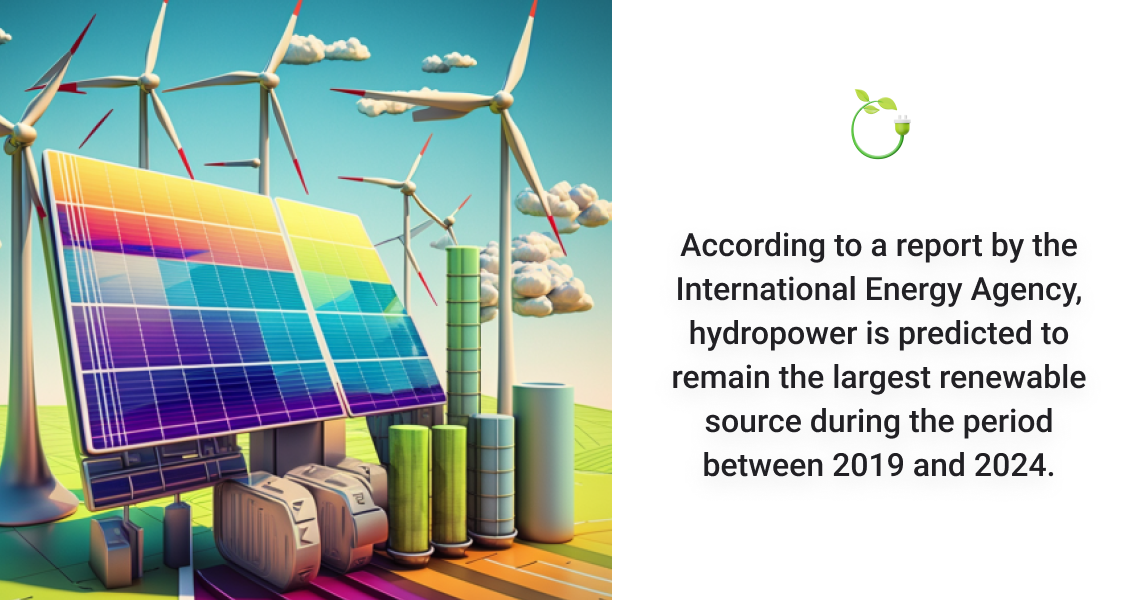Investing in companies prioritizing sustainability and environmental responsibility has recently gained significant traction. This trend, known as green investing, seeks to align personal values with investment decisions while potentially generating strong financial returns.
However, it is crucial to understand both the benefits and potential risks involved in this type of investing. Let's discuss it in this blog post.
What is Sustainable/Green Investing?
It is a type of investment strategy focusing on investing in companies or projects promoting environmentally friendly and sustainable practices.
The goal is to support businesses working towards reducing their environmental impact and mitigating climate change while generating financial returns for the investor. This can include investments in renewable energy, clean technology, and environmentally conscious companies. As well as investment funds and exchange-traded funds (ETFs) that focus on environmental, social, and governance (ESG) factors.
When making investment decisions, investors who practice sustainable investing may consider a range of ESG criteria, such as a company's carbon footprint, labor practices, and management of natural resources.

Benefits of Green Investing
- Positive Social and Environmental Impact: Green investing can help support and promote companies actively working to address environmental and social challenges. This can have a direct positive impact on society and the environment and help drive systemic change toward more sustainable business practices;
- Diversification: Green investing can provide an opportunity to diversify an investment portfolio and potentially reduce risk by including investments in companies with a range of ESG practices and financial profiles;
- Alignment with Personal Values: Green investing allows individuals to align their investment portfolio with their values and beliefs. This can provide a sense of satisfaction and purpose in one's investment decisions;
- Financial Performance: According to McKinsey & Company studies, companies with strong ESG practices tend to have better long-term financial performance compared to companies with weaker ESG practices. This is due to a focus on sustainability and responsible business practices, which can lead to greater efficiency, reduced risk, and improved brand reputation.
When you invest sustainably, you know your money is being used to create a better future.
What are the risks of Sustainable Investing?
While green investing offers many potential benefits, it is essential also to understand the potential risks involved, including:
- Market Risks: Like any other investment, green investments are subject to market risks and can fluctuate in value based on market conditions;
- Lack of Standardization: The definition of a "green" investment can vary widely, making it difficult for investors to compare and assess investment options;
- ESG Data Quality: The quality of ESG data and reporting can vary widely, making it challenging for investors to assess a company's ESG practices and performance accurately;
- Managerial Expertise: Some green investment strategies may require specialized knowledge and experience in ESG analysis. Finding a qualified investment manager with this expertise may be difficult.
It is vital for investors to carefully consider the potential benefits and risks of green investing and to seek professional advice before making investment decisions.
How to Get Started with Sustainable Investing?
Getting started with green investing is easier than you might think. Here are the steps to get started:
- Determine your values and goals. What issues are you most passionate about? What do you hope to achieve with your investments? Answering these questions will help you determine the companies you want to invest in.
- Research sustainable investment options. There are many different investment options, including sustainable mutual funds, exchange-traded funds (ETFs), and individual stocks. Research the options that are available to you and find the one that aligns with your values and goals.
- Invest. Once you've determined the right sustainable investment option for you, it's time to invest. You can do this through a brokerage firm or a financial advisor.
By following these steps, you can start with sustainable investing and make a difference in the world.

What are examples of green investing?
There are several examples of green investing, including:
- Renewable Energy Funds: These investment funds invest in companies involved in the production and distribution of renewable energy, such as solar, wind, and hydropower.
- Sustainable Equity Funds: These funds invest in companies with strong ESG practices and a focus on sustainability across various industries.
- Green Bonds: Green bonds are debt securities that raise capital to finance environmentally friendly projects, such as renewable energy and energy efficiency projects.
- Clean Technology Funds: These funds invest in companies involved in the research, development, and production of clean technology solutions, such as electric vehicles and energy-efficient appliances.
- Community Development Financial Institutions (CDFIs): CDFIs are financial institutions that provide loans and investments to underserved communities, with a focus on promoting sustainable development and social impact.
Clean Energy ETFs:
iShares Global Clean Energy ETF (NASDAQ: ICLN)
First Trust NASDAQ Clean Edge Green ETF (NASDAQ: QCLN)
Invesco Solar ETF (NYSEARCA: TAN)
ALPS Clean Energy ETF (BATS: ACES)
Renewable Energy:
General Electric Company (NYSE: GE)
Sunrun Inc. (NASDAQ: RUN)
Fuel Tech, Inc. (NASDAQ: FTEK)
Ormat Technologies Inc (NYSE: ORA)
Waste Management and Recycling:
Republic Services Inc. (NYSE: RSG)
GFL Environmental Inc. (NYSE: GFL)
Waste Management Inc. (NYSE: WM)
These are just a few examples of the many types of green investing options available to investors. The specific investment options that are right for an individual will depend on their investment goals, risk tolerance, and personal values.
Conclusion:
In a world with limited resources, it's essential to use them wisely and protect what we have left. Green companies are at the forefront of this effort, embracing innovation and developing new technologies that utilize alternative energy sources like solar, geothermal, and others. Additionally, investing in green companies is one of the most promising and prospective investment opportunities. Anyway, it's important to conduct thorough research and make informed decisions before investing in any company.







